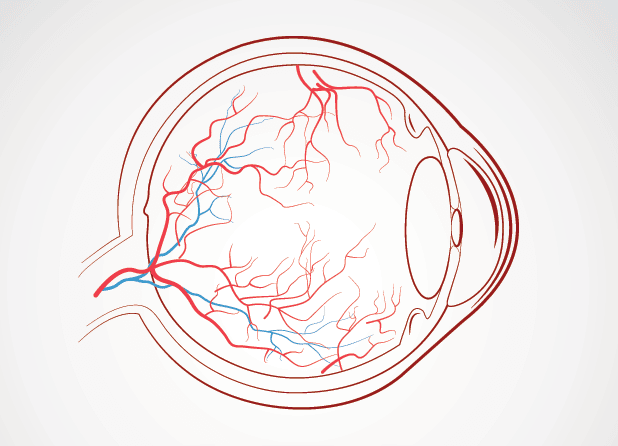Our body has two main types of blood vessels: arteries that carry important nutrients and oxygen to organs and tissues, and veins which carry the used blood back towards the heart so that the blood can be re-oxygenated in the lungs and re-circulated. The retina has a very high rate of metabolism and, as a result, has a very prominent blood vessel system.

Problems with the retinal blood vessels can cause blurred or distorted vision. Special tests, such as a fluorescein angiogram, can help in evaluating the retinal blood vessels.
The retina is supplied by a central retinal artery which is a small artery originating from the carotid artery. The retinal artery can get clogged by plaques which can cause a sudden occlusion. Arteries can also be affected by high blood pressure which may narrow and limit the blood flow.
Typically there is one central draining vein in the retina, with many smaller branch veins. Veins have thin walls and therefore are susceptible to pressure from the stiffer neighboring arteries which may cause the vein to collapse. A blood clot may develop in a retinal vein causing a build-up of back pressure; bleeding into the retina then occurs, typically causing symptoms of blurriness. If the central vein is occluded, the symptoms tend to be more pronounced than if a smaller branch vein is involved.
Treatment of vascular occlusions can vary from observation to a variety of interventions. Laser treatments or injections of medications may be helpful. A systemic evaluation with your primary care provider may be recommended.
Wheaton Eye Clinic’s unparalleled commitment to excellence is evident in our continued growth. Today we provide world-class medical and surgical care to patients in six suburban locations—Wheaton, Naperville, Hinsdale, Plainfield, St. Charles, and Bartlett.
(630) 668-8250 (800) 637-1054